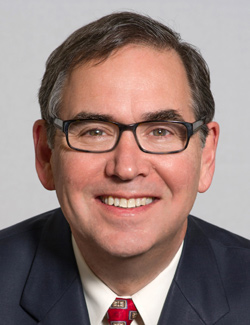I am excited about our Quantum 2.0 future, the current pace of activity and progress, and the broad base of participation.
This September saw the debut of a new OSA meeting: the Quantum 2.0 Conference. As with most scientific events this year, Quantum 2.0—along with the co-located Frontiers in Optics + Laser Science conference, the joint annual meeting of OSA and the American Physical Society’s Division of Laser Science—was held entirely online. The new quantum meeting alone had 2,500 registrants and active participation, from the keynote talks to the technical sessions and associated Q&A.
Watching this meeting quickly evolve from an idea to a vibrant virtual meeting underscores that, coronavirus or no, we live in a time when new ideas, new terms of art and ultimately new products are entering our lives. It’s analogous to the condensed timeline of optical physics around the first demonstration of a laser, six decades ago. Back then, many new ideas, concepts and words—optical resonators, population inversions, Gaussian beams—suddenly became part of our lives and our technical toolboxes.
The Quantum 2.0 Conference had sessions on quantum computing, communication and simulation, data security, sensors and networks. It had a panel discussion on what defines a quantum workforce, and on the specific knowledge and training scientists and engineers will need to fully realize the field’s potential. “Qubit” and “entanglement” are now familiar words in our lexicon.
Sincere thanks to the general chairs, OSA Fellows Michael Raymer, Chris Monroe and Ronald Holzwarth. They, along with their world-class program committee, constructed a meeting that truly reflects the state of the art in this emerging field. And—as detailed in a feature article on page 40—the OSA staff created an exemplary platform for launching the new meeting.
A distinguishing aspect of the program was the diverse lineup of speakers from industry, academia, and government labs worldwide. That international participation reflects the global support for government funding of quantum-related research. As has been widely reported, China, Japan, the United Kingdom, the European Union and other areas are pouring the equivalent of billions of U.S. dollars into programs to advance quantum technology.
In the United States, meanwhile, OSA (in partnership with SPIE) advocated strenuously for the passage of the National Quantum Initiative (NQI) Act through the National Photonics Initiative (NPI), formed to further advance areas of photonics critical to U.S. competitiveness. Since the act’s passage in late 2018, annual funding for quantum has expanded at the U.S. National Institute of Standards and Technology, the National Science Foundation, and the Department of Energy. Some US$650 million will go into the establishment of eight new quantum centers over the next five years.
U.S. government funding of quantum information science is poised to continue its rapid increase over the next few years, in line with international trends. Several bills before the U.S. Congress this year would further accelerate quantum research. OSA and the NPI will continue to educate members of Congress about this burgeoning area and the need to support it.
I am excited about our Quantum 2.0 future, the current pace of activity and progress, and the broad base of participation in industry and academia. I think we can say—to paraphrase the country singer Barbara Mandrell—“We were quantum before quantum was cool”!
—Stephen D. Fantone,
OSA President

